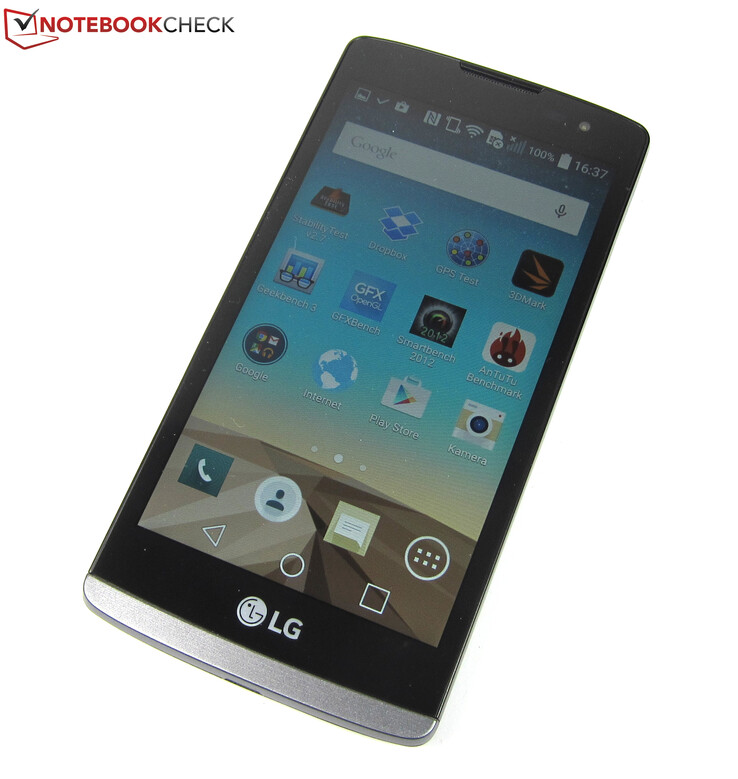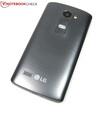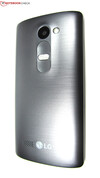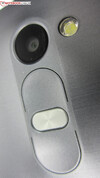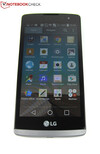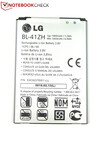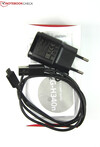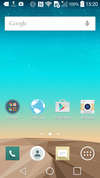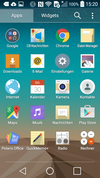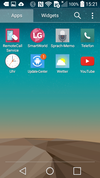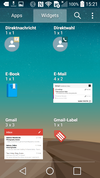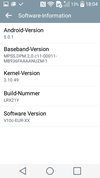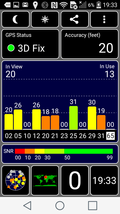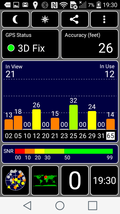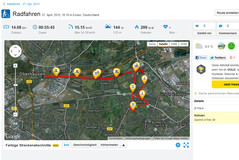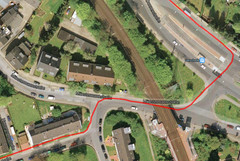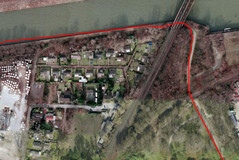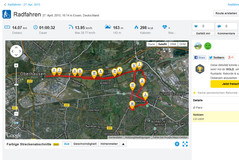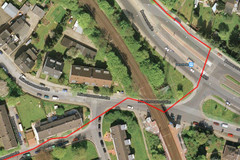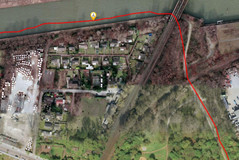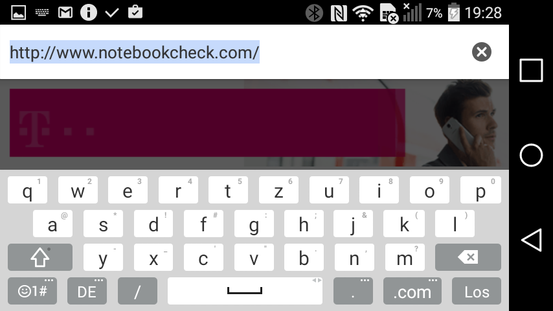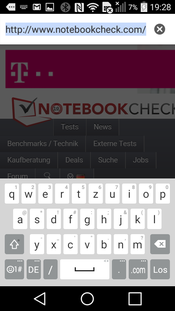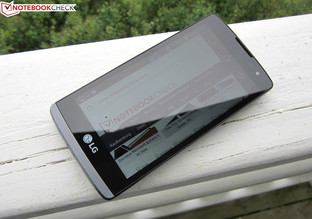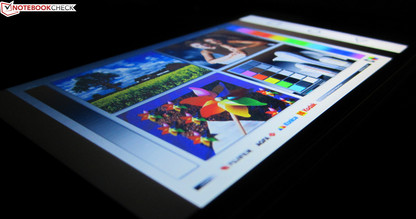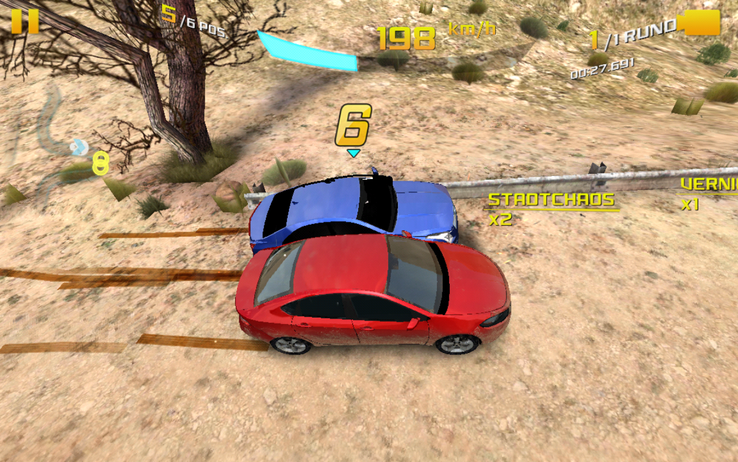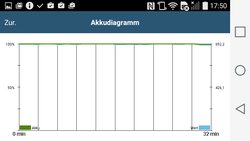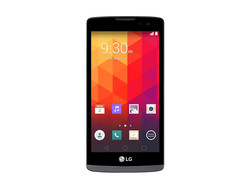LG Leon Smartphone Review
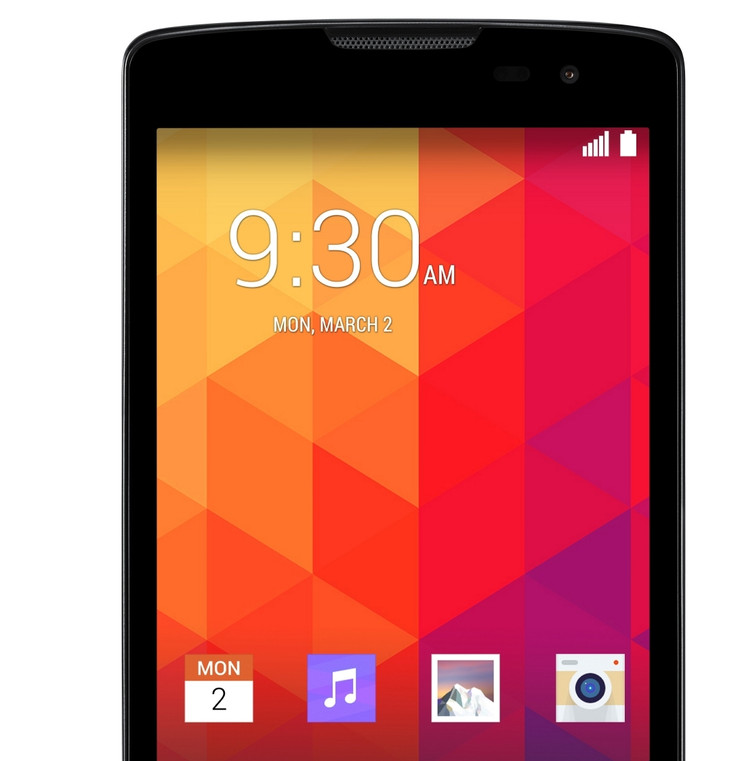
For the original German review, see here.
Not doing anything by halves was likely LG's aphorism, and it introduced four new smartphones from the entry-level and mid-range sector at the annual Mobile World Congress (MWC). The devices, ranging in size from 4 to 5 inches, have been named Magna, Spirit, Joy and Leon, cost between 100 and 199 Euros (~$114 and $227), and are to replace the manufacturer's "L" lineup. The latest Android version 5.0 powers the smartphones except for the LG Joy. Interesting features, such as a power button on the rear ("rear key"), shooting selfies via gestures in front of the camera, and the "Knock Code" are also incorporated. The latter feature optionally enables unlocking the smartphone via a personal knock code of three to eight taps on the screen. Owners of an LG G2 will be familiar with this feature because it is the further development of the "KnockOn" technology.
Our review sample, the 4.5-inch LG Leon LGH340N, with an official retail price of 149 Euros (~$170), belongs to the entry-level sector among the four new models. Although it is based on the same hardware as the mid-range Magna (5 inches) and Spirit (4.7 inches) with a Qualcomm Snapdragon 410 MSM8916, 1 GB of RAM and 8 GB of storage, it only displays 854x480 pixels and does not have an HD resolution. Modesty is also the motto for the front camera that only shoots pictures in VGA while 1 megapixel or even 5 megapixels are available in the Magna and Spirit depending on the model. Then again, the generous configuration is very impressive with a 5-megapixel camera and a 1900 mAh battery, among other features. Furthermore, an extensive communication bundle in the form of GSM, UMTS, LTE, Bluetooth 4.1, NFC and Wi-Fi 802.11 b/g/n is on the pro side. A slightly slimmed down version of the approximately 135 Euro (~$154) LG Leon LGH340N is also available in the LGH320. It is priced at a lower 120 Euros (~$137), but does not support LTE and relies on the Mediatek MT6582 SoC.
Case
At first glance, LG's Leon LGH340N does not look like an entry-level smartphone. It could be mistaken for a higher positioned device owing to its classy appearance. The display cover that extends on three sides very close to the casing's edge is the primary reason, giving the deactivated 4.5-inch screen a much bigger and striking impression. The screen closes flush with the lightly curved chassis at the lower edge. The metallic look in titanium silver (also available in a gold color) conveys high-quality, but then proves to be simple plastic. However, the entry-level Android handheld has a good feel; the fingers have a good grip on both the screen's surface and the casing's back.
The positioning of the power button and volume rocker will be unusual for many smartphone users. They are both located in the center of the upper half of the casing's back. That, however, has advantages. The pointer finger can easily reach them and, unlike the common arrangement on the sides, they are not hit accidentally. LG consistently does not install any controls on the smartphone's sides. The power button and volume rocker cannot be triggered when on a table because they are in a small recess and thus do not have contact to the surface. In addition to the removable battery, the micro SIM and microSD card slots are found behind the removable back cover.
The lightly curved chassis of LG's Leon makes it the thickest handheld among the comparison devices with approximately 11 millimeters (~0.43 in). Asus' ZenFone 5 comes closest with 10.3 millimeters (~0.41 in). Microsoft's Lumia 640 (8.8 millimeters/~0.35 in) and Sony's Xperia M2 (8.6 millimeters/~0.34 in) are especially thin in contrast.
Connectivity
Qualcomm's Snapdragon 410 MSM8916 ARM-based mid-range SoC powers LG's Leon. Its four cores can clock at up to 1.4 GHz, but only runs at 1.2 GHz maximum in LG's smartphone. The processor can fall back on the integrated Adreno 306 graphics card and 1 GHz of RAM. 8 GB of storage supplement that. However, only roughly 3 GB are available after deducting the OS and preloaded apps in the state of delivery. The internal storage can be expanded by up to 32 GB via the microSD card slot.
Software
Android 5.0.1 operates in LG's Leon. In addition to various LG and Google apps, Polaris Office suite is also preloaded.
Communication & GPS
LG's Leon is quite sociable with GSM quad-band (850/900/1800/1900 MHz) and UMTS dual-band (900/2100 MHz) that allows telephoning with the entry-level smartphone from virtually everywhere in the world in conjunction with a micro-SIM card. The review sample also enables high-speed Internet browsing with its LTE tri-band (800/2100/2600 MHz), which achieves a download speed of up to 150 MBps according to the manufacturer. Short range data sharing is possible via Wi-Fi 802.11 b/g/n, Bluetooth 4.1 or NFC. No problems evolved with Wi-Fi transmission in the 2.4 GHz frequency band in the test, and the expected speed was achieved. However, it was not possible to connect to the router in the 5.0 frequency band.
The A-GPS receiver in LG's Leon pinpointed the present location up to a few meters and is almost just as accurate indoors as outdoors. The tracking abilities of LG's smartphone are thus absolutely sufficient for smartphone applications, and can even compete with navigation systems like the Garmin eTrex 30. LG's Leon was sometimes off course on our approximately 14 kilometer (~8.7 miles) test route, but in total, the deviations were within tight limits.
Telephone & Voice Quality
The phone app does not leave any open questions with its self-explanatory tabs "dial", "call list", "contacts", "favorites", and "groups". There were never any interruptions, interference noises or other connection issues in calls to landlines or mobile networks. The voice quality was also impeccable.
Cameras & Multimedia
LG's Leon features a 5-megapixel camera with LED flash and a maximum resolution of 2560x1920 pixels, which shoots pictures in the 4:3 format. Users who prefer photos in the 16:9 format will have to switch to the next lower resolution (2560x1440 pixels). Good: Videos can be recorded in the Full HD mode and are rendered smoothly at 30 frames per second. The camera menu is easy to manage with self-explanatory symbols and a preloaded help function. However, there are only a few setting options. No image parameters, apart from the resolution, can be set. In return, face recognition, geo-tagging, a timer, and voice control are included. The voice control responds to witty commands; the user is rewarded with a picture when saying "cheese", "smile", "whiskey", "kimchi" or "LG".
The front-facing camera has a similar feature that, however, responds to gestures rather than words. To shoot a selfie, the user holds an open hand in front of the lens and closes it to a fist. LG's Leon takes a photo after a three-second countdown. The image quality of the front-facing camera is not very good in view of the VGA resolution, but its photo talents are still just enough for self-portraits.
The 5-megapixel primary camera does a much better job, and shoots pictures in a decent quality. However, the photos lack the last bit of focus and also look a bit pale. Blurriness becomes quite evident in somewhat less favorable light conditions. That is no reason for hobby photographers to dismiss LG's Leon though.
Accessories & Warranty
LG ships its smartphone with a modular power supply, a USB cable, and a quick start guide. The manufacturer does not offer any product-specific accessories on its website. The LGH340N comes with a 24-month warranty; the battery is only covered for 6 months.
Input Devices & Handling
The unusual positioning of the power button and volume rocker (on the rear as said above) might not appeal to everyone. However, it is virtually impossible to trigger the keys accidentally. Only screenshots, for which the power button and "volume down" button have to be pressed simultaneously, might be a bit awkward. Although the buttons are agreeably big, they are very close to each other.
Both touchscreen control and the virtual keyboard respond accurately to inputs and are thus beyond reproach. The keyboard allows entering long web links and texts quickly, particularly in landscape mode. The underlying quad-core prevents lags or unnecessary waiting times during operation. It sometimes might take a few moments for LG's Leon to respond to commands directly after booting, but that is not really a shortcoming.
Convenient: The Android menu bar can be displayed in either white or black. Users can also map the three standard softkeys for "back", "home screen" and "options" in any order, and add two buttons for notifications and the "QuickMemo" notepad function. Consequently, a total of 5 keys can be displayed in the menu bar.
Display
The IPS screen in LG's Leon achieves a satisfactory average brightness of 322.9 cd/m². Starting with LG's G2 Mini with 334 cd/m² up to Sony's Xperia M2 with 483 cd/m², the screens of the comparison devices all have a higher brightness, which make them even more suitable for use in different environmental conditions. However, the screen in LG's Leon convinces with a sharp reproduction despite its comparatively low resolution of 854x480 pixels and a pixel density of 218 ppi. The good black level (0.36 cd/m²) and good contrast ratio (906:1) match to that.
| |||||||||||||||||||||||||
Brightness Distribution: 81 %
Center on Battery: 326 cd/m²
Contrast: 906:1 (Black: 0.36 cd/m²)
ΔE Color 4.81 | 0.5-29.43 Ø5
ΔE Greyscale 4.82 | 0.57-98 Ø5.3
Gamma: 2.03
| LG Leon LGH340N Adreno 306, 410 MSM8916, 8 GB eMMC Flash | Asus Zenfone 5 Adreno 305, 400 MSM8926, 8 GB eMMC Flash | LG G2 Mini Adreno 305, 400 MSM8926, 8 GB SSD | Microsoft Lumia 640 Adreno 305, 400 MSM8226, 8 GB eMMC Flash | Sony Xperia M2 Adreno 305, 400 MSM8926, 8 GB SSD | |
|---|---|---|---|---|---|
| Screen | 1% | -4% | 14% | -22% | |
| Brightness middle | 326 | 389 19% | 334 2% | 433 33% | 483 48% |
| Brightness | 323 | 375 16% | 331 2% | 429 33% | 467 45% |
| Brightness Distribution | 81 | 88 9% | 92 14% | 95 17% | 93 15% |
| Black Level * | 0.36 | 0.58 -61% | 0.38 -6% | 0.52 -44% | 0.93 -158% |
| Contrast | 906 | 671 -26% | 879 -3% | 833 -8% | 519 -43% |
| Colorchecker dE 2000 * | 4.81 | 4.22 12% | 5.32 -11% | 3.42 29% | 5.74 -19% |
| Greyscale dE 2000 * | 4.82 | 3.08 36% | 6 -24% | 3.03 37% | 6.83 -42% |
| Gamma | 2.03 108% | 2.57 86% | 2.37 93% | 2.16 102% | 2.2 100% |
| CCT | 7288 89% | 6840 95% | 8685 75% | 7081 92% | 9470 69% |
* ... smaller is better
The assessments using the CalMAN software and the X-Rite i1Pro 2 colorimeter show that LG gives its smartphone a fine color balance, which is not a matter of course particularly in the entry-level sector. The screen's white point of 7288 K is a bit over the ideal of 6500 K and is reflected in the tendency of a "cooler" reproduction. However, that is not noticed much in use. The deviations in the grayscale level (DeltaE of 4.82) and color reproduction (DeltaE of 4.81) are also within an acceptable range.
The average brightness of 322.9 cd/m² of LG's Leon is high enough for outdoor use, but the very glossy screen could prevent legibility. The screen scores with high viewing angle stability owing to its IPS qualities. However, the colors of displayed content look a bit falsified from flatter viewing angles.
Performance
LG's smartphone is based on Qualcomm's Snapdragon 410 MSM8916 quad-core SoC. Its Cortex A53 cores clock at 1.2 GHz each. The processor uses Qualcomm's Adreno 306 graphics chip, which provides roughly the same performance as its Adreno 305 precursor, but consumes slightly less power. The SoC in LG's handheld can fall back on 1 GB of RAM and 8 GB of storage. The Snapdragon's 410 MSM8916 performance places it in the mid-range and gives LG's Leon a high system performance, which the benchmarks confirm.
While LG's Leon is basically just as fast as its contenders in the synthetic benchmarks like 3DMark or GFXBench, it manages a slight advantage in the browser benchmarks in total. The good and bad are very close in the write and read performance. The sequential read rates do not give reason for complaint, just like in random file operations. However, LG's Leon almost stagnates in sequential write and even falls behind its weak contenders.
| 3DMark | |
| 1280x720 Ice Storm Standard Score (sort by value) | |
| LG Leon LGH340N | |
| Asus Zenfone 5 | |
| LG G2 Mini | |
| Sony Xperia M2 | |
| 1920x1080 Ice Storm Extreme Score (sort by value) | |
| LG Leon LGH340N | |
| Asus Zenfone 5 | |
| LG G2 Mini | |
| Sony Xperia M2 | |
| 1280x720 offscreen Ice Storm Unlimited Score (sort by value) | |
| LG Leon LGH340N | |
| Asus Zenfone 5 | |
| LG G2 Mini | |
| Sony Xperia M2 | |
| GFXBench (DX / GLBenchmark) 2.7 | |
| T-Rex Onscreen (sort by value) | |
| LG Leon LGH340N | |
| LG G2 Mini | |
| Microsoft Lumia 640 | |
| Sony Xperia M2 | |
| 1920x1080 T-Rex Offscreen (sort by value) | |
| LG Leon LGH340N | |
| LG G2 Mini | |
| Microsoft Lumia 640 | |
| Sony Xperia M2 | |
| AnTuTu v5 - Total Score (sort by value) | |
| LG Leon LGH340N | |
| Asus Zenfone 5 | |
| Octane V2 - Total Score (sort by value) | |
| LG Leon LGH340N | |
| Asus Zenfone 5 | |
| LG G2 Mini | |
| Microsoft Lumia 640 | |
| WebXPRT 2013 - Overall (sort by value) | |
| LG Leon LGH340N | |
| Asus Zenfone 5 | |
| Microsoft Lumia 640 | |
| Sony Xperia M2 | |
| Google V8 Ver. 7 - Google V8 Ver. 7 Score (sort by value) | |
| LG Leon LGH340N | |
| Asus Zenfone 5 | |
| LG G2 Mini | |
| Microsoft Lumia 640 | |
| Sony Xperia M2 | |
| Sunspider - 1.0 Total Score (sort by value) | |
| LG Leon LGH340N | |
| Asus Zenfone 5 | |
| LG G2 Mini | |
| Microsoft Lumia 640 | |
| Sony Xperia M2 | |
| AndroBench 3-5 | |
| Sequential Read 256KB (sort by value) | |
| LG Leon LGH340N | |
| Asus Zenfone 5 | |
| LG G2 Mini | |
| Sony Xperia M2 | |
| Sequential Write 256KB (sort by value) | |
| LG Leon LGH340N | |
| Asus Zenfone 5 | |
| LG G2 Mini | |
| Sony Xperia M2 | |
| Random Read 4KB (sort by value) | |
| LG Leon LGH340N | |
| Asus Zenfone 5 | |
| LG G2 Mini | |
| Sony Xperia M2 | |
| Random Write 4KB (sort by value) | |
| LG Leon LGH340N | |
| Asus Zenfone 5 | |
| LG G2 Mini | |
| Sony Xperia M2 | |
* ... smaller is better
Games
The performance of LG's Leon is just as easily sufficient for multimedia use as for up-to-date apps. However, the green light cannot be given unconditionally for games. The majority of games should run lag-free and without any problems on the 4.5-inch smartphone, among them even current smash hits like Asphalt 8. But these computing-intensive games load the graphics chip immensely, and it thus has little power reserves for the future gaming generation. LG's Leon is very suitable for an occasional game though.
Emissions
Temperature
No matter how high the load on LG's Leon, it only heats up marginally - it could only be pushed to a maximum of 35.1 degrees Celsius (95.18 Fahrenheit) even after a full hour in the stress test. Its average of just 32.9 degrees (91.22 Fahrenheit) is quite a bit cooler. As the GFXBench 3.0 stress test shows (see right, blue curve), the SoC always retrieves its full potential. The temperature indicator already stops climbing at 28.8 degrees Celsius (83.84 Fahrenheit) while idling.
(+) The maximum temperature on the upper side is 35.1 °C / 95 F, compared to the average of 35 °C / 95 F, ranging from 21.9 to 56 °C for the class Smartphone.
(+) The bottom heats up to a maximum of 29.9 °C / 86 F, compared to the average of 33.8 °C / 93 F
(+) In idle usage, the average temperature for the upper side is 28.8 °C / 84 F, compared to the device average of 32.7 °C / 91 F.
Speaker
The little, rear-sided speaker might not perform any sound miracles, but it does well, remaining audible even when the smartphone is placed on a surface like a table or chair owing to its curved chassis. The sound does not distort even at maximum volume.
Energy Management
Power Consumption
LG's Leon thwarted our attempts of measuring its power requirement with the Voltcraft VC870 digital multimeter. We could not evoke any useful rates, but that did not have an impact on the battery life assessments.
Battery Runtime
LG installs a removable lithium-ion battery that can supply the Leon LGH340N with 7.2 Wh. That translates to a decent, although not exceptional battery life. LG's Leon manages to browse on the Internet via Wi-Fi for 6 hours and 50 minutes, and 6 hours 21 minutes in the slightly more demanding version 1.3 of our Wi-Fi test. However, the smartphone has to take last place in the comparison since all contending products have more stamina. Sony's Xperia M2 and LG's G2 Mini are particularly convincing here; they do not need external power until after 11 and 16 hours respectively.
| LG Leon LGH340N Adreno 306, 410 MSM8916, 8 GB eMMC Flash | Asus Zenfone 5 Adreno 305, 400 MSM8926, 8 GB eMMC Flash | LG G2 Mini Adreno 305, 400 MSM8926, 8 GB SSD | Microsoft Lumia 640 Adreno 305, 400 MSM8226, 8 GB eMMC Flash | Sony Xperia M2 Adreno 305, 400 MSM8926, 8 GB SSD | |
|---|---|---|---|---|---|
| Battery Runtime | 20% | 89% | 5% | 52% | |
| WiFi | 410 | 545 33% | 1003 145% | 686 67% | |
| WiFi v1.3 | 381 | 502 32% | |||
| Load | 215 | 229 7% | 284 32% | 166 -23% | 293 36% |
| H.264 | 543 | 294 |
Pros
Cons
Verdict
LG has a nicely designed smartphone in its lineup with the 4.5-inch Leon LGH340N. It has quite a bit of value to offer and only a few shortcomings despite its budget price, including an extensive interface configuration including LTE and NFC, and a bright and viewing angle stable IPS screen. LG's Leon is also based on a good performance foundation with Qualcomm's Snapdragon 410 MSM8916 quad-core processor, Qualcomm's Adreno 306 graphics chip and 1 GB of RAM, and it remains pleasantly cool in use.
LG proves that a low price does not have to exclude a decent total performance with its LGH340N.
More plus points are rewarded for the solid 5-megapixel camera and the latest Android 5.0.1 Lollipop OS. LG's smartphone is not a high-flyer in terms of battery life, but it delivers enough power for a whole workday.
It can be tolerated that an HD screen is not installed in view of the price, especially since LG's Leon displays sharp content despite its relatively low resolution of 854x480 pixels. However, the webcam is not convincing. Its VGA resolution is not really ideal for selfies and video chats. The 8 GB of nominal storage sound good on the spec sheet but are reduced to a low 3 GB making an expansion via a microSD card almost a must.
LG Leon LGH340N
-
05/06/2015 v4(old)
Manuel Masiero


 Deutsch
Deutsch English
English Español
Español Français
Français Italiano
Italiano Nederlands
Nederlands Polski
Polski Português
Português Русский
Русский Türkçe
Türkçe Svenska
Svenska Chinese
Chinese Magyar
Magyar